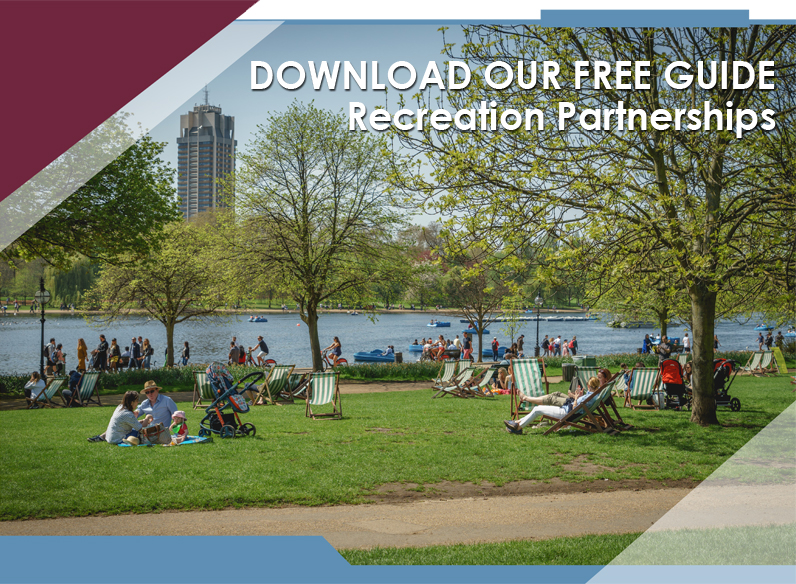How Recreation Partnerships Deliver More Value for Communities
September 5, 2019 /
Jackson Township, Butler County, is a rural community that is experiencing significant growth. This excerpt from Pennsylvania Recreation & Parks magazine shows how the community is using partnerships to provide first class recreational experiences – like a 50-mile trail network – to its residents.

Put your helmet on, grab your bike, and head for your neighborhood trail. How far could you go?
How long could you enjoy the sound of leaves rustling in the breeze and birds singing in the trees before it gave way to honking horns and the hum of wheels hitting the pavement at 25, 35 or even 45 miles per hour? Could you enter the trail from your neighborhood and ride it all the way to the community park? Or would you have to drive a few miles to a trailhead? Could you bike to your favorite restaurant to meet a friend, or would you need to hop in the car and battle traffic?
In most communities, the local trails are short and lack sufficient connections between homes and area amenities, but a group of municipalities and organizations in Western Pennsylvania are charting a different path.
As part of a comprehensive recreational planning effort, Jackson Township, Butler County, has formed a number of public and private partnerships to provide its residents with access to a regional network of trails that will eventually span more than 50 miles. This network will connect them to a variety of local parks, restaurants, and businesses; water trails; and the national scenic North Country Trail. Through these trails, they will have hiking and biking access to many of Pennsylvania’s recreational treasures like the Allegheny National Forest and the PA Wilds.
Recreation Partnerships Expand Possibilities
At the start of this project, Jackson Township had no community park of its own, and the only trail within its borders was privately owned. Residents frequently traveled to neighboring Harmony and Zelienople Boroughs for recreation, and Jackson Township even contributed a portion of its general revenue to Zelienople Community Park Association for the maintenance of its community park.
Jackson Township had partnered with its neighbors on recreation in several ways out of necessity because it had no recreational resources of its own, but its growth provided an opportunity. What the township lacked in developed recreation, it more than made up for in undeveloped land ripe with potential – something that the more dense communities of Harmony and Zelienople did not have.
The communities could see that cooperating on recreation could be mutually beneficial, so they worked together on a multi-municipal comprehensive recreational plan. They formed an inter-municipal agreement to implement the plan.
Jackson, Zelienople, and Harmony weren’t the only ones dreaming of a regional trail network. A few miles away, the Rachel Carson Trails Conservancy was working with Pine, Cranberry and Marshall Townships on a plan to connect to the North Country Trail, too. Representatives of the trail and the municipalities were meeting monthly to hammer out the details on how trails would cross boundaries, what amenities they would connect, etc. They invited Jackson to join them. Adams Township and the Borough of Bradford Woods also joined the group.
The fruit of their labor is the Commodore Perry Regional Trail. The network of trails, sidewalks, and in-road facilities will span more than 50 miles in length, paralleling the Route 19 corridor as it makes its way from the North Hills of Pittsburgh to Erie.
It will connect five municipal parks with a total of 740 acres of green space: Adams Community Park, Graham Park (in Cranberry), Knob Hill Park (in Marshall), Pine Community Park, and Zelienople Community Park.
It will also provide walking and biking access to local shopping and eateries in downtown Zelienople, Freedom Square, and the Village at Pine.
Perhaps most exciting is the connection it will provide to regional recreational treasures like Brush Creek, North Park, and the 34-mile Rachel Carson Trail.
Jackson formed another partnership with the North Country Trail that will connect its residents to the PA Wilds and northwestern Pennsylvania’s most scenic forestland.
The township also partnered with Wild Waterways, a non-profit organization that operates water trails throughout the Connoquenessing and Slippery Rock watershed. Jackson officials are allowing Wild Waterways to access public lands to make connections between the water trails and land trails.
Once these trail networks are built, a biking enthusiast could theoretically hop onto the Rachel Carson Trail in Allegheny County’s North Park and ride all the way to Erie.
By partnering with other municipalities and a variety of public and private organizations, Jackson Township will be able to provide its community with better recreational opportunities for less money, increase its user base for recreational programs, and attract more outside funding.

Benefits of Recreation Partnerships
Partnerships can be scary to municipal officials, but they offer significant benefits:
- They provide your community with a broader array of programs and facilities.
- They heighten a program’s credibility and visibility through joint marketing efforts.
- They increase the user base (preventing cancellations and lowering fees).
- They increase the volunteer base.
- They provide cost savings through shared resources.
- They position you well for grant funding.
- They expose your staff to enhanced growth and professional development opportunities.
But cooperation can be hard. It requires compromise and trust. Communities must establish lines of communication and use them openly and honestly. They must also establish a legal framework in writing to protect the interests of all parties and establish consensus on program expectations.
In the case of Jackson Township, their first foray into recreational partnerships was small: They provided financial support to a park in the neighboring municipality because their residents were frequent park users. They expanded their partnership by inviting that municipality and one other to join them in completing a multi-municipal comprehensive recreation plan. Then they joined partnerships with two non-profit trail organizations (and five additional municipalities) to connect the township with larger trail networks throughout the western region of Pennsylvania.

Municipal leaders considering recreation partnerships have many options. They can start small with a single class or event, and they can expand all the way up to a collaborative comprehensive recreation plan. Explore your community’s options in our free guide to recreation partnerships. This guide will expand on the many benefits of partnership and show you:
How to identify potential partners in your community
How to maximize the benefits of partnership and minimize its risks

